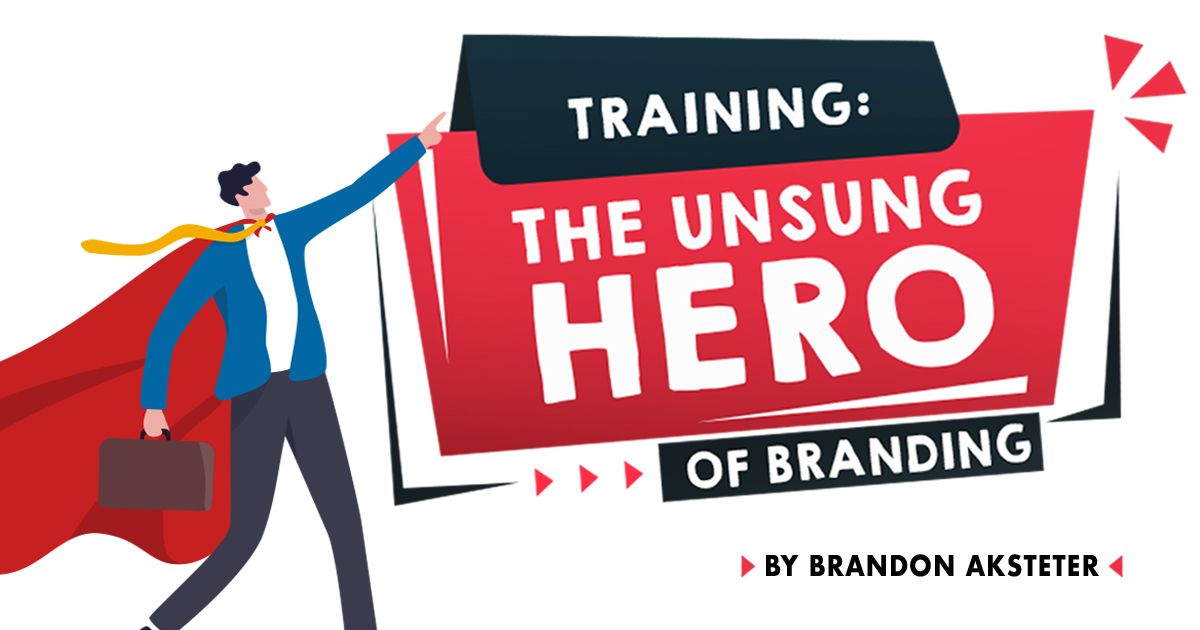As marketers, we understand that brand drives everything we do, from logo design and website development to producing marketing collateral and advertisements. But as we venture outside the marketing function of an organization, the perceived importance of a brand can start to dwindle. And it’s a very realistic assumption to think that many employees in your organization might ask, “Isn’t our brand just the logo?”
This is where brand training comes in. At LMD, it’s a standard component for projects where we develop new or refreshed brands, and usually happens near the end of the project before a scheduled brand launch. Whether you’re looking to refresh your brand, or simply strengthen it, brand training can be an incredibly useful tool.
What are a few of the benefits of brand training?
- Educate the importance of brand. As alluded to earlier, it’s important for your team members to know that your brand is more than a logo. And surprisingly for most, it’s also more than your company’s visuals and messages (although they play a key role). A brand is everything that helps your customer identify your company, products, or even thought leaders at your organization. Without this understanding across all employees, companies risk finding themselves with scattered, inconsistent brands.
- Improve the customer experience. One of the most critical aspects of successful brands is consistency. Consistent brands establish a level of trust and comfort that not only help customers select your company over the competition, but also keep them coming back. At the most basic level, for example, this means using the same high-quality version of your logo across all materials as a familiar mark of your brand. But strong branding includes intangible elements that are equally important to the customer experience—like personality. If you’ve ever been to a Chick-fil-A restaurant, one of their consistent brand elements is the positive and caring nature of their employees, culminating in hearing the signature phrase “My pleasure!” when thanking an employee for your meal. Beyond delivering consistently tasty chicken sandwiches, Chick-fil-A has trained its employees to deliver on a culture that creates a consistent feeling of comfort and attention to customers, which keeps them coming back again and again.
- Strengthen sales and business development. Whether you sell a consumer product in a point-of-sale context, or an in-depth service to a high-profile client, your customer will want you to answer the same question: “why?” Why should they buy from you? LMD’s brand strategists are strong believers in the power of “why” in answering this question, borrowing from the famous TED Talk from Simon Sinek. To paraphrase the discussion, Sinek states that customers don’t care as much about what you do or how you do it—they care about why you do what you do. Explaining your brand’s “why” helps customers develop an emotional connection to your company or product that is memorable, unique, and drives purchase decisions more than any other factor. Take TOMS shoes an example. When TOMS hit the market in 2006, their shoes never claimed to be the highest quality footwear around. But the famous “one for one” model which donated shoes to children in need gave customers a strong reason to buy and feel good about their purchase. By training your employees to effectively communicate your brand’s “why” in sales pitches, elevator speeches, or talking points, your customers will gain a better understanding of how doing business with you can make a positive impact in their life.
What can you start doing now?
- Designate a brand manager. Typically a leader within the marketing or creative team, a brand manager is tasked with managing and protecting all aspects of the brand. This happens by creating brand materials, making them accessible, and enforcing guidelines that make sure a brand is executed correctly and consistently across all channels.
- Train a team of brand ambassadors. Depending on the size of your organization, a brand manager may benefit from a team of brand ambassadors to distribute brand materials and manage their usage within different departments or divisions. When staff members across each department have questions or need support when executing the brand effectively, a brand ambassador is the first line of defense.
- Facilitate a company-wide training and keep doing it! After you’ve assigned a brand management team, gather your workforce for an interactive presentation that explains the ins and outs of your brand, and informs how each member of your team can live and support the brand through their roles. Find ways to make the session fun and engaging through storytelling or exercises. Feel free to make this a yearly session, or one for new employees, to make sure your brand is lived and reinforced by your entire workforce through the years.
Need help refreshing your brand and improving the customer experience with more consistent and effective brand usage? Talk with LMD to see how we can help you make a difference.

